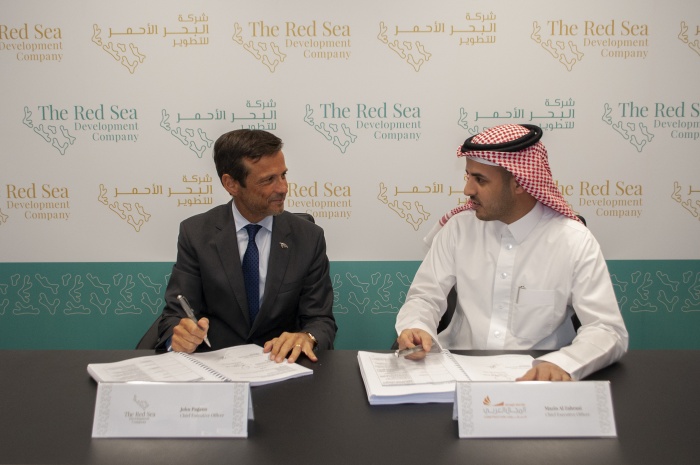
Red Sea Development Company begins construction of coastal village
The Red Sea Development Company, the master developer behind one of the world’s most ambitious tourism initiatives, has commenced development of the coastal village.
The facility will become a residential and commercial area designed to house the workers, staff and management of the Red Sea Project.
Construction of corporate offices is already underway on the coastal village site.
Scheduled for completion by quarter two of 2020, the offices will become the centre of operations for the development.
They will accommodate 500 people and provide supporting amenities including a 160-seat restaurant and 100-seat auditorium.
TRSDC has also signed a contract for construction of the first ten residential apartment buildings within the coastal village.
The village will ultimately become home to around 14,000 people who will be employed in roles at the destination when the first phase opens in 2022.
It will also provide temporary housing for 25,000 workers who will be building the infrastructure and assets.
“Delivering and operating a destination as ambitious as the Red Sea Project requires a happy, healthy and fulfilled community of people enjoying a high standard of living and the amenities necessary to support a modern lifestyle,” said John Pagano, chief executive, the Red Sea Development Company.
“The coastal village will be a vibrant and engaging community combining the highest quality accommodation, environmentally sensitive corporate offices and a wide range of leisure and recreational facilities, all delivered in a way that is fully aligned with our commitment to sustainability.”
ADVERTISEMENT
The construction partner for the design and build of the management offices is Saudi group Al Majal Al Arabi, which recently signed a separate contract with the Red Sea Development Company to build 5,000 residential units for construction workers at the destination.
The offices will have a total floorspace of approximately 7,000 m2 and have been designed in three independent campus elements to take advantage of the unique microclimate at the Red Sea project, maximising passive shading and ventilation and promoting interaction between indoor and outdoor spaces.
The construction partner for the development of the residential apartments will be Saudi Amana Contracting, a subsidiary of UAE-based Amana Contracting Group, which recently won the contract to design and build a management hotel to serve the coastal village.
The first five apartment buildings are expected to be completed by quarter three of 2020 and the remaining five by quarter four in the same year, delivering a total of 300 apartments.
Some of the properties will initially provide accommodation for the construction workers who will be hired to develop the destination.
The apartments will later be repurposed to meet the needs of employees working at the various hotels, commercial and retail assets, entertainment facilities and corporate offices that will make up the Red Sea Project.
Both the offices and the residential apartments will incorporate off-site fabrication and modular construction techniques. This approach enhances quality and safety, reduces the number of construction workers on site and minimizes environmental impact during both fabrication and installation.
“Our highly sustainable approach to developing the Coastal Village revolves around building permanent assets and repurposing them, rather than building temporary assets for short-term use,” said Ian Williamson, chief project delivery officer at the Red Sea Development Company.
“Avoiding the construction of temporary assets where possible both preserves the area’s natural ecosystems and also ensures that everyone who works at the Red Sea Project can enjoy a high standard of living and a healthy working environment.”
The Red Sea Project is on track for completion by the end of 2022, including 14 luxury hotels offering 3,000 rooms across five islands and two inland resorts.
It will also include a marina, entertainment facilities, an airport, and the necessary supporting logistics and utilities infrastructure.

